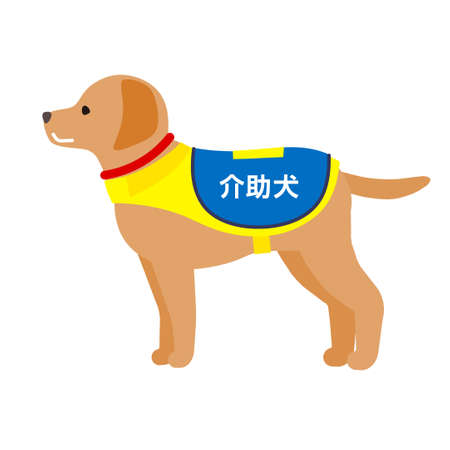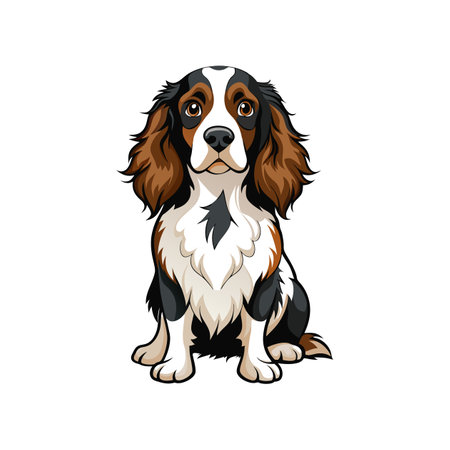Understanding Mental Stimulation for Dogs
When we think about keeping our dogs healthy, most of us picture long walks through the neighborhood, games of fetch in the backyard, or perhaps romping at a local dog park. While physical exercise is undeniably important, there’s another side to canine well-being that often gets overlooked: mental stimulation. Just like people, our four-legged friends need opportunities to use their brains and challenge their minds. Mental stimulation involves activities that engage your dog’s senses, problem-solving skills, and natural instincts. This kind of engagement isn’t just “extra credit” — it’s essential for a balanced, happy life. Providing regular mental challenges can help prevent boredom, reduce unwanted behaviors like chewing or digging, and even strengthen the bond between you and your pup. In essence, mental stimulation is as vital as daily walks or playtime; it helps ensure your dog thrives both inside and out.
2. The Signs Your Dog Needs More Mental Exercise
If your dog has been acting out or seems a little off lately, they might just be begging for more mental stimulation in their daily routine. Just like us, dogs can get bored and restless if their minds aren’t engaged enough. Here are some common behavioral cues and signals to look out for that suggest your furry friend is craving a bit more brainwork:
| Behavior | What It Might Mean |
|---|---|
| Destructive Chewing | Your dog may chew furniture, shoes, or household items when they’re bored and looking for something to do. |
| Barking Excessively | Frequent barking at nothing in particular can signal pent-up mental energy. |
| Pacing or Restlessness | Nonstop pacing or inability to settle down often points to an under-stimulated mind. |
| Digging Indoors or Outdoors | Dogs will dig when they need an outlet for their curiosity and energy. |
| Attention-Seeking Behavior | Jumping up, pawing, or nudging you constantly could mean your pup wants more interactive play or challenges. |
| Obsessive Behaviors | Licking paws, spinning, or chasing tails can sometimes develop when a dog isn’t mentally satisfied. |
Understanding Your Dog’s Unique Signals
Every dog is different—some may show subtle signs like sighing frequently or staring longingly at you while others get into obvious mischief. If you notice your usually well-behaved pup suddenly acting out of character, it could be their way of telling you that walks and fetch just aren’t cutting it anymore.
Don’t Mistake Boredom for Bad Behavior
It’s easy to think your dog is just being naughty, but oftentimes these behaviors are their way of asking for more interesting things to do. Mental exercise isn’t just about solving puzzles; it’s also about exploring new environments, learning tricks, and having meaningful interactions with you.
Quick Tip:
If your four-legged companion is showing any of the signs above, try adding new games, scent work, or training sessions into their day. Not only will this help curb those unwanted behaviors, but it’ll also deepen the bond between you both—something every pet-loving household cherishes!

3. Why Mental Workouts Matter as Much as Walks
When we think about keeping our dogs healthy, daily walks and playtime often come to mind first. But just like us, our furry friends need more than physical exercise to thrive—they also crave mental challenges. Engaging your dog’s mind is just as important as keeping their body active, and the benefits are deeply intertwined.
Mental stimulation works out your dog’s brain much like a brisk walk works out their muscles. Problem-solving, learning new commands, or tackling interactive toys all help keep their minds sharp. When a dog’s brain gets a workout, they’re less likely to become bored or develop unwanted behaviors like chewing, excessive barking, or digging in the backyard vegetable patch.
Think of mental engagement as the canine equivalent of reading a good book or solving a puzzle—it keeps things interesting! Dogs who get regular mental workouts are often calmer and more adaptable at home. They can handle changes in routine (like that surprise visit from your neighbor’s chickens) with greater ease because they’re used to thinking things through.
Ultimately, combining physical and mental activities leads to a happier, healthier pup. Just as you’d balance outdoor adventures with cozy evenings by the fire, your dog needs both movement and mental challenge for overall well-being. A well-exercised mind supports emotional health and deepens the bond between you and your four-legged companion.
4. Simple Ways to Stimulate Your Dog’s Mind at Home
If you’re living the good life in the countryside or even just have a cozy backyard in suburbia, mental stimulation for your dog doesn’t have to be complicated or expensive. American pet parents know that a happy, healthy pup is all about balance—just like us humans! Here are some farm-friendly and household activities you can easily work into your daily routine to keep those canine brains buzzing.
Puzzle Feeders and Food-Dispensing Toys
Puzzle feeders are a fantastic way to turn mealtime into playtime, keeping your dog engaged while slowing down their eating. For country dogs, scatter kibble in the yard or hayloft for a “sniff and seek” challenge. In smaller spaces, classic puzzle toys like KONGs or treat balls provide hours of entertainment.
| Type of Puzzle Feeder | Best For | Where to Use |
|---|---|---|
| KONG Classic | All breeds & chewers | Indoor/outdoor |
| Treat Ball | Energetic pups | Living room, barnyard |
| Snuffle Mat | Scent-driven dogs | Kitchens, porches |
| DIY Scatter Feeding | Active farm dogs | Lawn, pasture areas |
Scent Games: Tap Into Their Natural Instincts
Your dog’s nose is their superpower! Hide treats around the house, under flowerpots on the porch, or amongst hay bales for a classic “find it” game. You can even use favorite toys or safe objects from around the farm to create an engaging scavenger hunt. Not only does this burn energy, but it also builds confidence and sharpens problem-solving skills.
Teach New Tricks (Yes, Even Old Dogs Can Learn!)
A little trick training goes a long way when it comes to mental stimulation. Start with basics like “sit,” “stay,” and “shake,” then move on to fun farm-friendly tricks such as carrying baskets, ringing a bell at the back door, or helping fetch garden tools. Keep sessions short and positive—think five minutes here and there between chores.
Farmhouse-Friendly Trick Ideas:
- Bring the Mail: Teach your pup to carry letters from the mailbox to the porch.
- Find the Egg: Hide (fake) eggs in straw for your dog to locate—perfect for chicken-keeping families!
- Clean Up Toys: Train your dog to put away their own toys after playtime.
- “Go Say Hi!”: Practice polite greetings with family and visitors arriving at the front gate.
Treat Tips for Training Success:
- Use small, soft treats for quick rewards.
- Switch up treat flavors to keep things interesting.
- Praise with lots of affection—tail wags guaranteed!
No matter where you live—from rural ranches to city apartments—these simple activities bring out your dog’s natural intelligence and add joy to their daily lives. Just like us, our furry companions thrive when their bodies and minds are kept active!
5. The Role of Nature and Community in Canine Enrichment
In the rhythm of rural living or the friendly bustle of a suburban neighborhood, dogs find some of their richest mental stimulation not just at home, but out in the world around them. Taking your pup for country walks is more than exercise; it’s an invitation to a sensory adventure. Out on winding trails or through fields, dogs encounter new scents, animal tracks, rustling leaves, and shifting terrain—each one sparking curiosity and encouraging natural problem-solving skills. These walks let your dog navigate fresh challenges and make sense of the environment, which keeps their mind sharp and satisfied.
Neighborhood adventures also play a big role in canine enrichment. A simple stroll down the block becomes a mental workout as your dog encounters children riding bikes, neighbors tending gardens, or squirrels darting across lawns. These ever-changing social and environmental cues prompt your dog to observe, react, and adapt—critical elements for building confidence and reducing boredom-based behaviors. Every mailbox sniffed or sidewalk detour is a mini-puzzle for your pup to figure out.
Community group playdates offer another layer of valuable stimulation. Meeting up with other pups at the local park or someone’s backyard means your dog practices social skills while learning canine etiquette through playful communication. Group settings encourage dogs to read body language, negotiate boundaries, and invent games together—all of which challenge their minds in ways solo play cannot match. Plus, watching how different dogs approach toys, obstacles, or even puddles inspires creative thinking and mimicry.
Whether you’re trekking through meadows with your pack or organizing weekend meet-ups with fellow pet parents, these experiences enrich your dog’s life far beyond what physical exercise alone can provide. The countryside’s wonders and community’s camaraderie weave together opportunities for exploration and learning that nurture both body and mind. By making time for these outdoor adventures, you’re supporting your dog’s mental health—and probably making sweet memories along the way!
6. Finding the Right Balance: Combining Mental and Physical Activities
Creating a daily routine that blends both mental and physical stimulation is key to raising happy, well-adjusted dogs—especially if you share your home with more than one pup. From our own life on the farm with a lively pack of four, I’ve learned that every dog is unique in their needs, but all thrive on variety and challenge. Here are some tips for weaving mental and physical activities into your dogs’ day, inspired by life in a multi-dog household:
Mix Up Your Walks
Don’t just walk the same route every day! Switch it up by exploring new trails or neighborhoods. Bring along some high-value treats and incorporate impromptu training sessions—ask your dogs to “sit,” “stay,” or “find it” along the way. This keeps their minds as engaged as their legs.
Group and Solo Playtime
If you have more than one dog, rotate between group activities like fetch races or tug-of-war, and solo games such as hide-and-seek with favorite toys. This gives each dog a chance to shine while learning from each other’s play styles.
Puzzle Toys and Brain Games
Integrate puzzle feeders, snuffle mats, or DIY treat hunts into their daily routine. You can even make it a friendly competition to see who solves the puzzle first—but always supervise to keep things positive.
Training Together (and Apart)
Short, focused training sessions—both individually and as a group—challenge your dogs mentally while reinforcing good manners. Teach new tricks or practice old favorites in different settings, like the backyard or living room, to keep things fresh.
Balance Rest and Activity
Just like us, dogs need downtime. After a stimulating morning of play and puzzles, let everyone unwind together on the porch or inside with a chew toy. This helps prevent overstimulation and supports emotional well-being.
By thoughtfully blending mental exercises with physical outings, you create a harmonious environment where each dog feels fulfilled—and the whole pack benefits from calmer energy and stronger bonds. Remember, variety is the spice of canine life!


